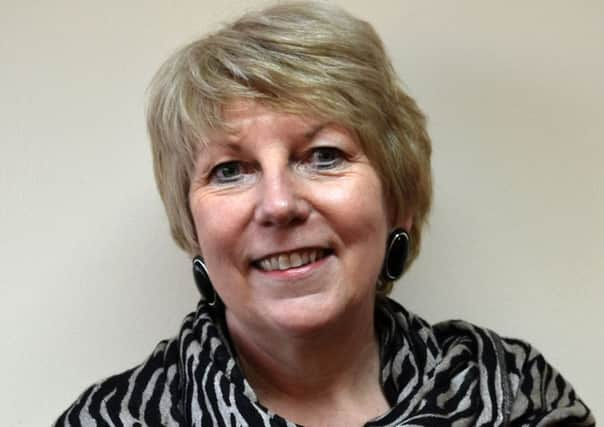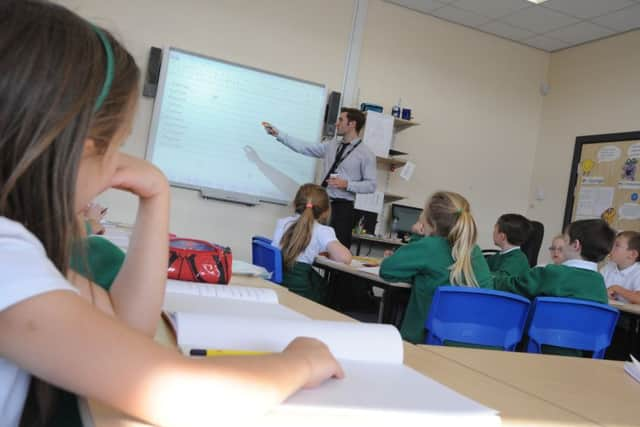Why teachers are ditching the classroom in droves


The 44-year-old taught maths in secondary schools for nearly two decades, eventually ending up as head of department at a school in Doncaster.
“By the end it felt that whatever you did was never enough,” he says. “I haven’t looked back since. The pub is hard work but there is hardly any stress compared to teaching.


Advertisement
Hide AdAdvertisement
Hide Ad“I was lucky, but I saw so many colleagues struggle with mental health problems brought on by the job. The pressure was immense – and sooner or later it caught up with most of them.”
Mr Allen isn’t alone in turning his back on teaching. The profession is experiencing an unprecedented exodus, with the number of teachers quitting having risen by 25 per cent over the last five years. The proportion of those choosing to leave ahead of retirement has jumped from 64 per cent to 75 per cent.
Despite spending £700m every year on training, the Government has failed to reach its own goals for recruitment for four consecutive years. The upshot is that the recorded rate of vacancies and temporarily filled positions has more than doubled. With a million more children set to enter state education by 2022, the profession appears to be nearing crisis point.
For Mr Allen, it was the feeling he was fighting a losing battle that eventually told. His school was identified by the Labour government as one of 638 nationwide where less than 30 per cent of students achieved five A* to Cs in GCSEs including English and maths. As such it was targeted under then schools secretary Ed Balls’ National Challenge initiative to drive up standards.


Advertisement
Hide AdAdvertisement
Hide AdMr Allen says he took over the school’s maths department at “rock bottom” but eventually succeeded in pushing the rate up to 62 per cent, above the national average. Even so, it didn’t seem enough for the authorities.
“You were under constant scrutiny from one organisation or another,” he says. “The National Challenge people were mainly supportive but you were always working under their shadow and that of Ofsted.
“When we had an inspection they weren’t bothered that we had improved results, it was all about which section of the cohort hadn’t achieved the target. It became all about exams and not what pupils had learned, especially when the Government changed.”
Mr Allen says his department spent two years preparing a GCSE curriculum, only for it to go out of the window once Michael Gove became Education Secretary in 2010.
Advertisement
Hide AdAdvertisement
Hide Ad“There is constant tinkering and I just wasn’t prepared to give any more of myself. I couldn’t have continued doing what I was until I was 65. Fortunately it was just me and my partner so we could take a risk – and I’m so glad we did.”
A survey conducted by the National Union of Teachers towards the end of last year found that more than half of teachers in England are thinking of quitting in the next two years, with 61 per cent of them blaming workload and 57 per cent wanting a better work-life balance.
In the 12 months to November 2014, the state sector lost nearly 50,000 teachers – representing the highest rate of exit for a decade and an increase of more than 25 per cent over five years.
At the last count, the number of temporarily filled teacher posts stood at 3,210, up from 2,300 the year before.
Advertisement
Hide AdAdvertisement
Hide AdThe number of teachers working without a formal teaching qualification – permitted in academies and free schools – was just over 20,000, up from 16,600.
100,000 qualified teachers have opted never to work in a classroom at all.
Four in 10 teachers quit within a year of qualifying and an NUT survey found than more than half of teachers are considering leaving.
The head of Ofsted, Sir Michael Wilshaw, has warned English schools are facing a “brain drain” of teachers because they are lured to private schools overseas.
Advertisement
Hide AdAdvertisement
Hide AdHe claims teachers should be given a “golden handcuffs” deal to stop them going abroad once they qualify.
Despite the national problems in bringing in enough teachers, education bosses in Doncaster reckon the borough has seen success in getting staff into the local schools.
Jo Moxon, assistant director of learning and achievement at Doncaster Council said: “Recruiting and keeping quality teachers is a big challenge across the UK. In Doncaster, we run an Initial Teacher Training (ITT) provision for schools which trains between 50 and 70 teachers every year. Despite the challenges in retaining teachers in the profession, we experience a good level of success with 85 per cent of our trainees going on to teach in Doncaster every year.
“We will keep working closely with the Teaching School Alliance and local academies, and continue to promote the positive aspects of teaching in order to encourage more local people to train to teach in Doncaster’s schools.”
Advertisement
Hide AdAdvertisement
Hide AdThe situation in Doncaster mirrors that of the rest of the country according to the teachers union NASUWT, which has been warning for the last few years now about a growing teacher recruitment and retention crisis.
Chris Keates, General Secretary of the union said: “Even when it is spending £700m annually on recruiting and training new teachers, the Government cannot meet its recruitment targets. Not even that level of expenditure can compensate for Government policies which have made the profession so uncompetitive and unattractive that they have generated a teacher supply crisis.
“With deep cuts to teachers’ pay year-on-year since 2011, increased pension contributions and excessive workload blighting the working lives, health and well-being of teachers, it is no wonder that applications to join the profession are down and resignations are up.”